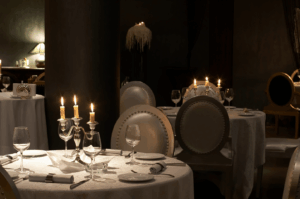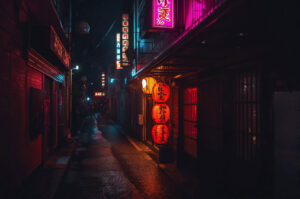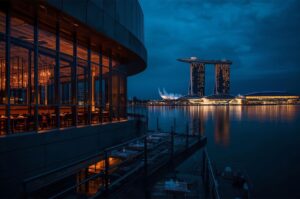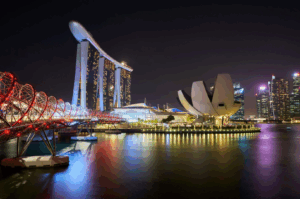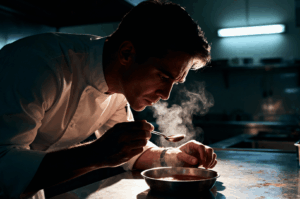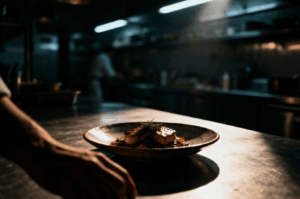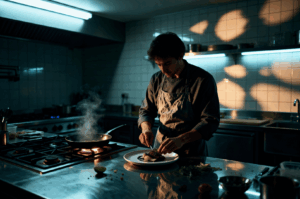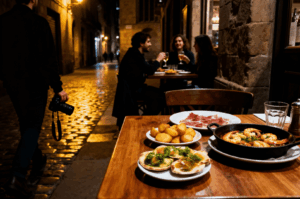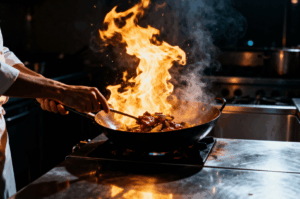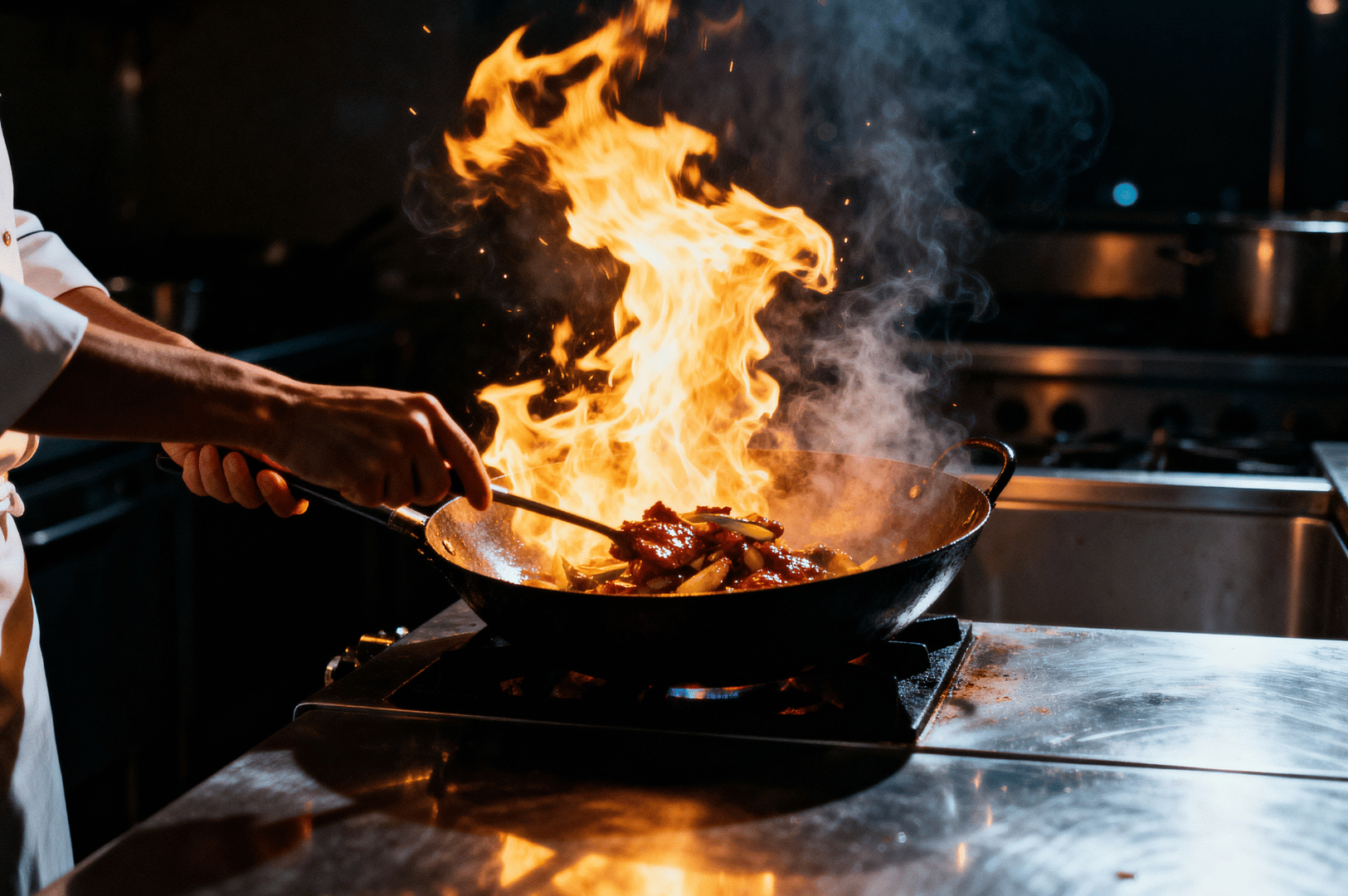
There is a raw, untamed energy in a kitchen at full tilt. For those of us who practice food photography, the most captivating element is often the most dangerous: fire. A burst of flame from a wok or the steady burn of candles on a dining table is more than just part of the cooking process; it's a transient, powerful light source. Using these flames to "paint" light onto a dish is a thrilling form of fire photography that transforms a simple meal into a dramatic spectacle. This guide offers simple tips for mastering flame photography techniques, turning chaotic fire into a controlled, artistic tool.
1. The Right Equipment for a Fire Photoshoot
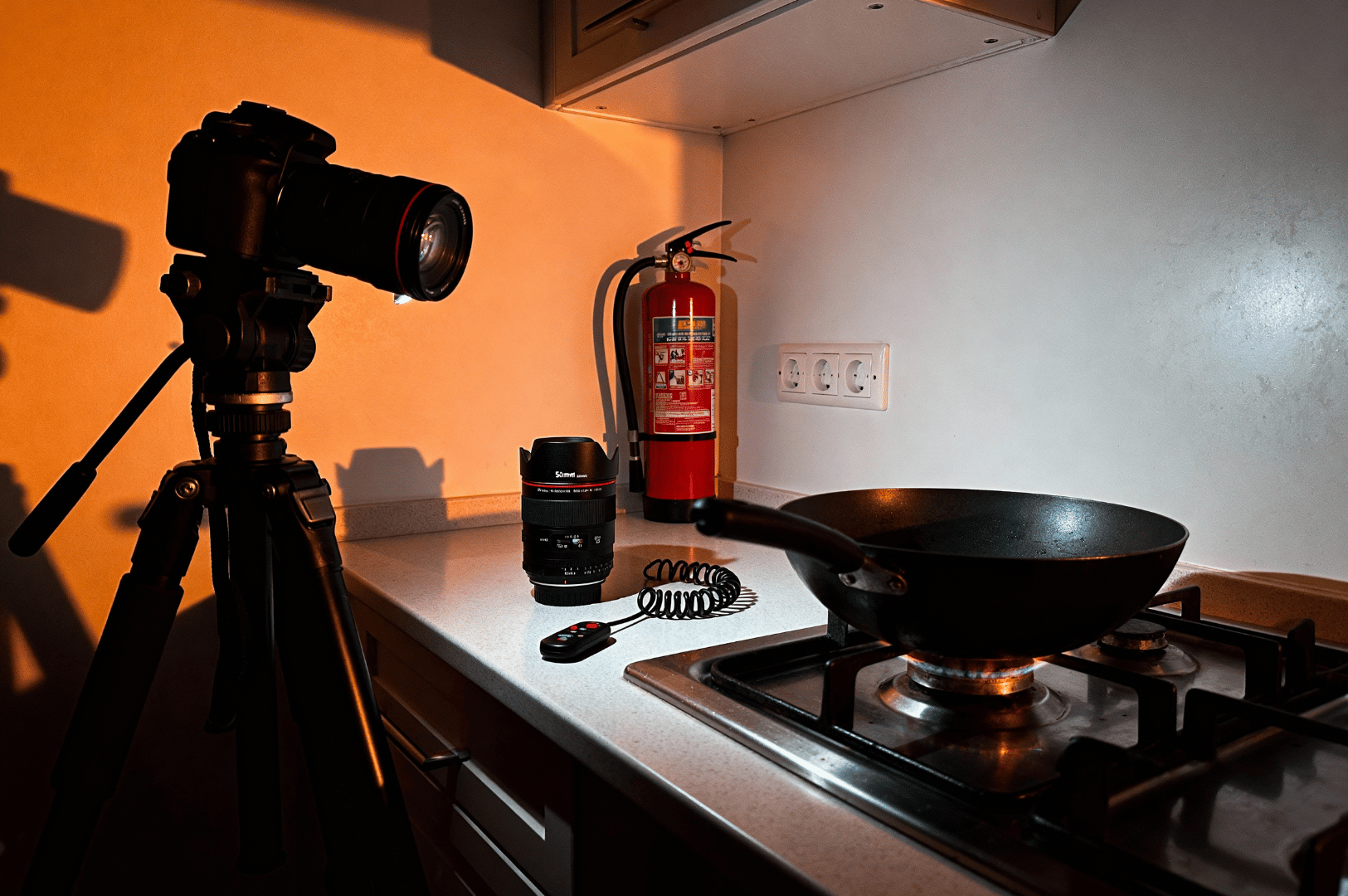
Your gear needs to handle low light and provide manual control. While natural light from the sun is predictable, flickering flames are not. Forget auto mode; you need the right equipment to take control.
- A camera with manual mode: You need full control over your camera settings.
- A fast lens: A lens with a wide aperture (like f/1.8) is crucial for gathering as much light as possible in a dark room. A wide-angle lens can capture the entire scene, but a 50mm lens is often perfect for focusing on the main subject.
- A sturdy tripod: Long exposure is key to this technique, making a tripod non-negotiable to prevent camera shake and blurry photos.
- A remote shutter release: This allows you to press the shutter button without touching the camera, further ensuring a sharp photo.
- A fire extinguisher: This is not optional. Safety must be your absolute priority. Have one within arm's reach at a safe distance.
2. Camera Settings for Photographing Fire
Getting your settings right is a balancing act between capturing the ambient light, freezing the food, and painting with the flame's motion. Start with these photography tips and adjust based on your specific lighting situation.
- Mode: Manual (M). This gives you control over all these things.
- ISO: Start with a lower ISO (100-400) to minimize noise. You can use a higher ISO if needed, but it may reduce image quality.
- Aperture: Begin around f/4 to f/8. A wide aperture creates a shallow depth of field, which can be a great shot, but a narrower one ensures more of your food is in focus.
- Shutter Speed: This is your primary creative tool. To capture the motion of bright flames, use a slow shutter speed—start with an exposure between 1 to 5 seconds. A fast shutter speed would freeze the fire, which isn't the goal for light painting.
- White Balance: Set this manually to complement the warm glow of the fire. Avoid Auto White Balance, as it will try to neutralize the beautiful warmth of the flames.
3. Lighting Techniques with Flames
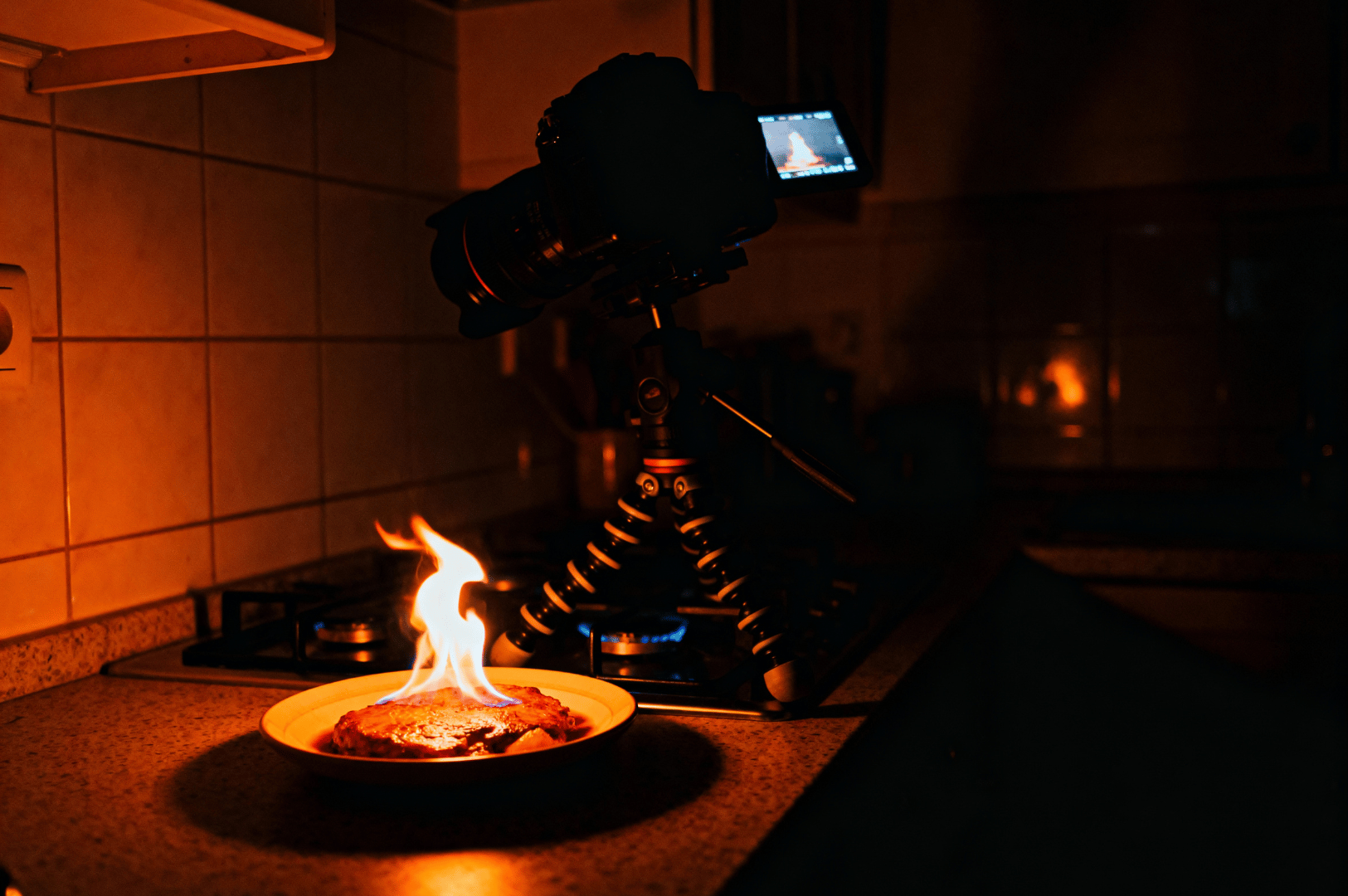
Using fire as your main light source is about embracing the contrast between bright flames and the surrounding darkness.
- Embrace the Shadows: Unlike shoots with soft light from a window or studio equipment, fire creates deep, dramatic shadows. Don't fight them. Use them to create a moody, eye-catching subject. Position your food so the flame acts as a side light, carving out texture.
- No Fill Light: For the most dramatic effect, avoid using any artificial light or fill light. The fire should be the only light source illuminating the food. The contrast between the flickering flames and the dark environment is what makes the image powerful.
- Timing is Everything: A great shot happens in a split second. Communicate with the chef or person handling the fire. Have your camera on the tripod and ready to shoot right before the flame erupts. A long exposure will capture the entire arc of the flame's movement.
4. Safety in a Controlled Environment
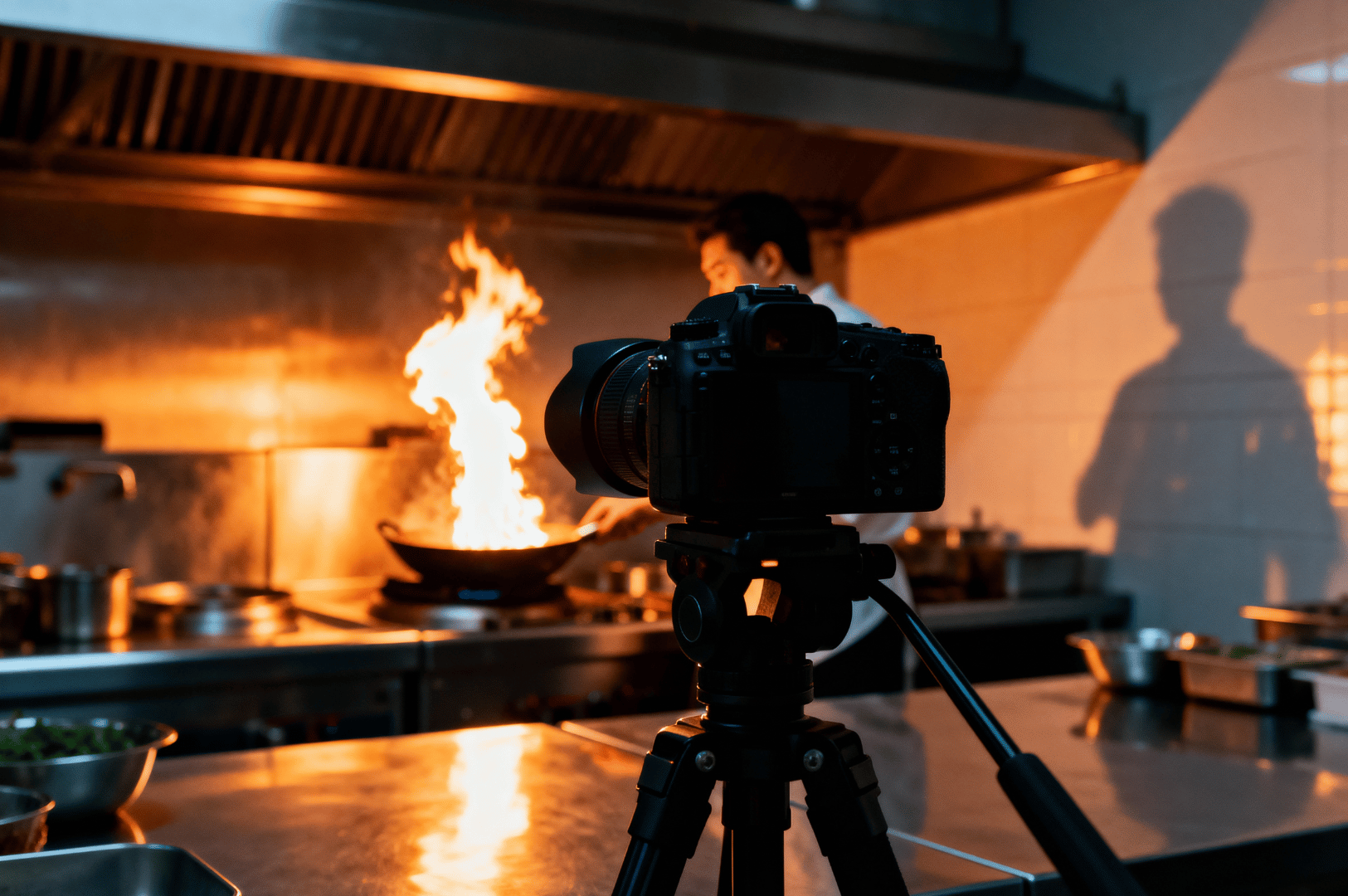
Kitchens can be hazardous. You are responsible for ensuring a safe fire photoshoot.
- Clear the Area: Ensure there are no flammable materials, such as paper towels or oil bottles, near the open fire. Create a neutral background free of clutter.
- Protect Your Gear: Keep camera straps and other equipment away from flames.
- Maintain a Safe Distance: Use your lens to get closer to the action, not your body.
- Work with Professionals: When you shoot food with fire, collaborate with chefs who understand the behavior of flames in their kitchen.
5. Post-Processing for a Dramatic Effect
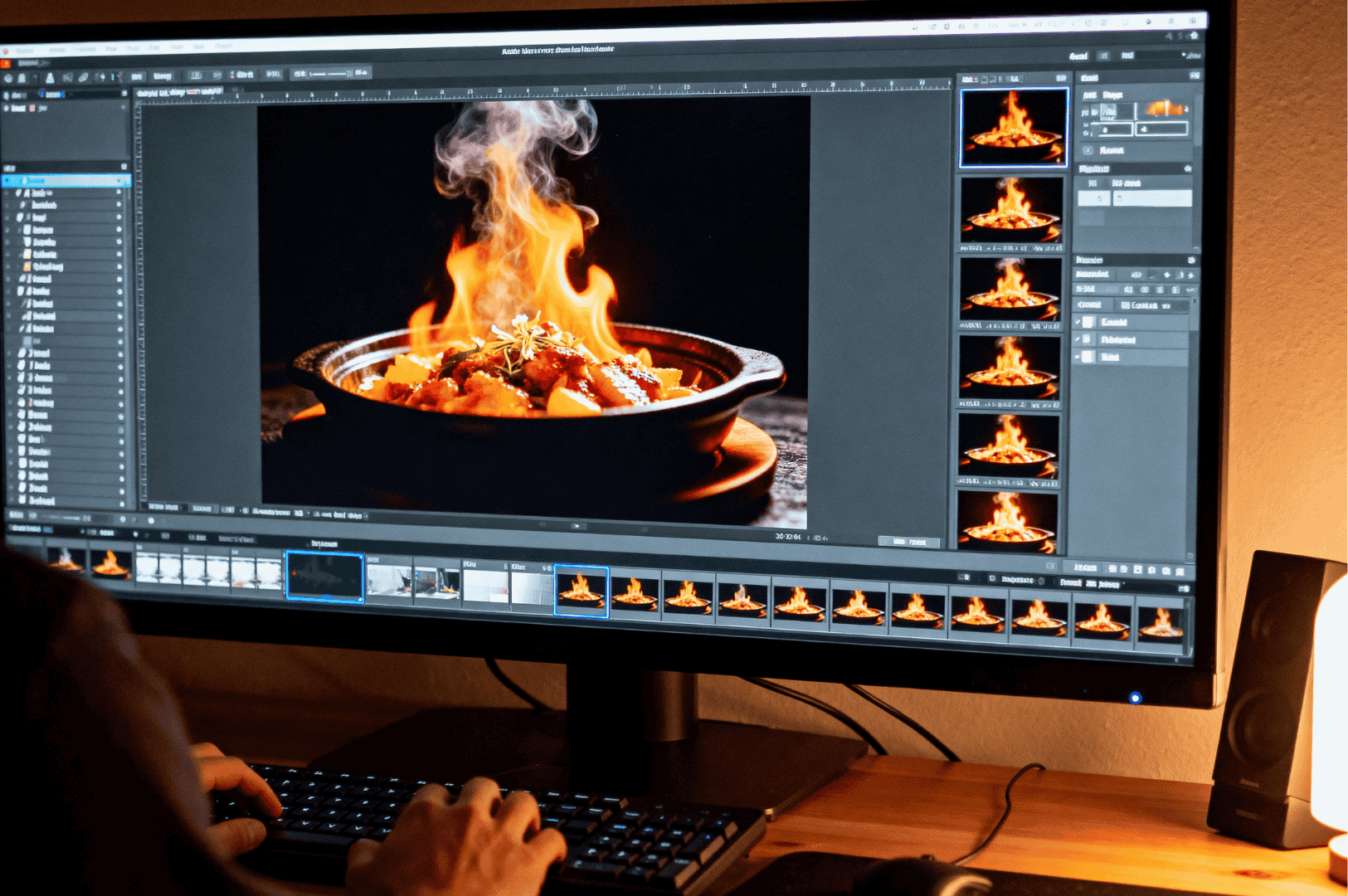
Your work isn't done after taking photos. Post-processing in a program like Adobe Photoshop is where you refine the drama and create the perfect shot.
- Adjust Exposure: Your initial image might be dark. Increase the overall exposure, but be careful not to blow out the highlights in the flame itself.
- Enhance Contrast: The beauty of these food photos lies in the contrast. Deepen the blacks to make the warm glow of the fire pop. This will make the main subject stand out.
- Refine Color: Enhance the warm tones from the flame by adjusting the color temperature or using color grading tools. This amplifies the soft glow and mood.
- Sharpen the Focal Point: Use sharpening tools sparingly on the food itself to make it the clear focal point of the image.
Capturing these moments is a thrilling challenge, but the reward is a truly dynamic and authentic photo. I hope these simple tips help you start shooting and create your own eye-catching images.
For more inspiration, follow my after-midnight MRT food photography adventures or explore artificial lighting techniques for natural-looking food photos to take your work to the next level.
Michelin Guide SG: The Complete Guide to Documenting Culinary Excellence and Cultural Memory
Sarah Teh | December 10, 2025
In Singapore’s michelin starred restaurants, moments of cultural memory unfold alongside fine dining. The michelin guide singapore is more than a ranking; it maps spaces where tradition, mastery, and aesthetics converge into experiences that exist briefly before becoming memory. Singapore stands out as a notable gastronomic destination in the Asia-Pacific region and the country’s culinary…
Tokyo Photography: A Guide to Izakaya and City Lights After Dark
Sarah Teh | December 10, 2025
The rain stops, but the streets of Shinjuku still gleam. Reflections of a thousand neon signs shimmer on the wet asphalt, painting the world in electric blue and vibrant pink. For a photographer, Tokyo at night is an endless playground. Nestled within this cinematic landscape, down a narrow alley and behind humble doorways, are the…
Night Photography Portfolio: Singapore’s Most Photogenic Fusion Restaurants
Sarah Teh | December 8, 2025
As the tropical sun dips below the horizon and the Lion City transforms into a glittering metropolis of neon and steel, savvy photographers know they’re about to witness the city at its most visually rich. Nowhere does this beauty come alive more than in Singapore’s growing scene of fusion restaurants, where each establishment is a…
Best Restaurant Singapore: A Complete Guide to the Lion City’s Top Dining Destinations
Sarah Teh | December 3, 2025
Singapore is a global food capital where hawker stalls and Michelin-starred restaurants coexist, reflecting the island’s rich multicultural heritage. The city offers a vibrant culinary scene, from traditional dishes steeped in history to innovative fine dining that pushes creative boundaries. Whether you’re a local or a traveler, this guide will help you discover the best…
Best Dining Experiences in Singapore: The Coolest Restaurants Right Now – Scene, Substance, and Stories Behind the Plates
Sarah Teh | November 26, 2025
What makes a restaurant truly cool in Singapore? It’s more than hype-it’s about story, substance, and scene coming together. Singapore stands out as one of the top cities for diverse and affordable dining experiences, thanks to its vibrant food scene and dynamic neighborhoods. The city’s coolest restaurants offer a unique dining experience where every detail-from…
The Art of Waiting: Chef Portraits Photography
Sarah Teh | November 19, 2025
The kitchen closes. The last server clocks out, and the dining room succumbs to a deep, restful silence. As a photographer who specializes in capturing culinary scenes after dark, I’ve learned that the most profound moments don’t happen during the frantic pace of service. They unfold in the quiet hours that follow, when a chef…
Shadow Play: Using Contrast for Dramatic Food Photography
Sarah Teh | November 12, 2025
Most food photographers chase the light. They seek bright, airy scenes with soft, even illumination to make food look fresh and appealing. But after the sun goes down, or on a dark and moody day, a different kind of magic emerges. I’ve learned to stop chasing bright light and start embracing the darkness. The secret…
Midnight Food Photography: The Secret Life of Restaurant Kitchens After Closing
Sarah Teh | November 5, 2025
The final customer has paid their bill and walked out into the night. The clatter of dishes fades, the front doors are locked, and a deep quiet settles over the restaurant. For most, this is the end of the day. For me, this is when the real work begins. My type of photography isn’t about…
Midnight Tapas: Barcelona’s Hidden Late-Hour Street Food Culinary Gems
Sarah Teh | October 29, 2025
The city of Barcelona breathes differently after midnight. The relentless energy of La Rambla softens to a murmur, and the ancient lanes of the Gothic Quarter trade crowds for shadows. This is when the true life of the city reveals itself, not in grand pronouncements, but in the clinking of a glass and the shared…
Flame Photography Techniques: Light Painting with Kitchen Flames – A Midnight Photographer’s Technical Guide
Sarah Teh | October 22, 2025
There is a raw, untamed energy in a kitchen at full tilt. For those of us who practice food photography, the most captivating element is often the most dangerous: fire. A burst of flame from a wok or the steady burn of candles on a dining table is more than just part of the cooking…
